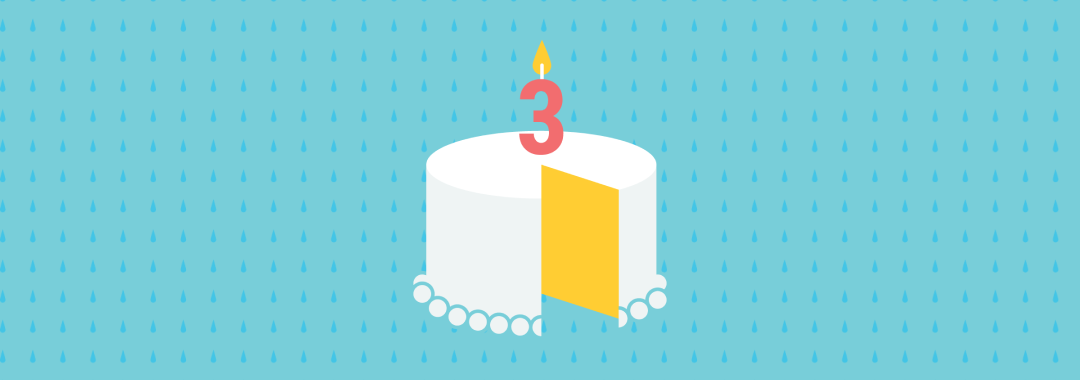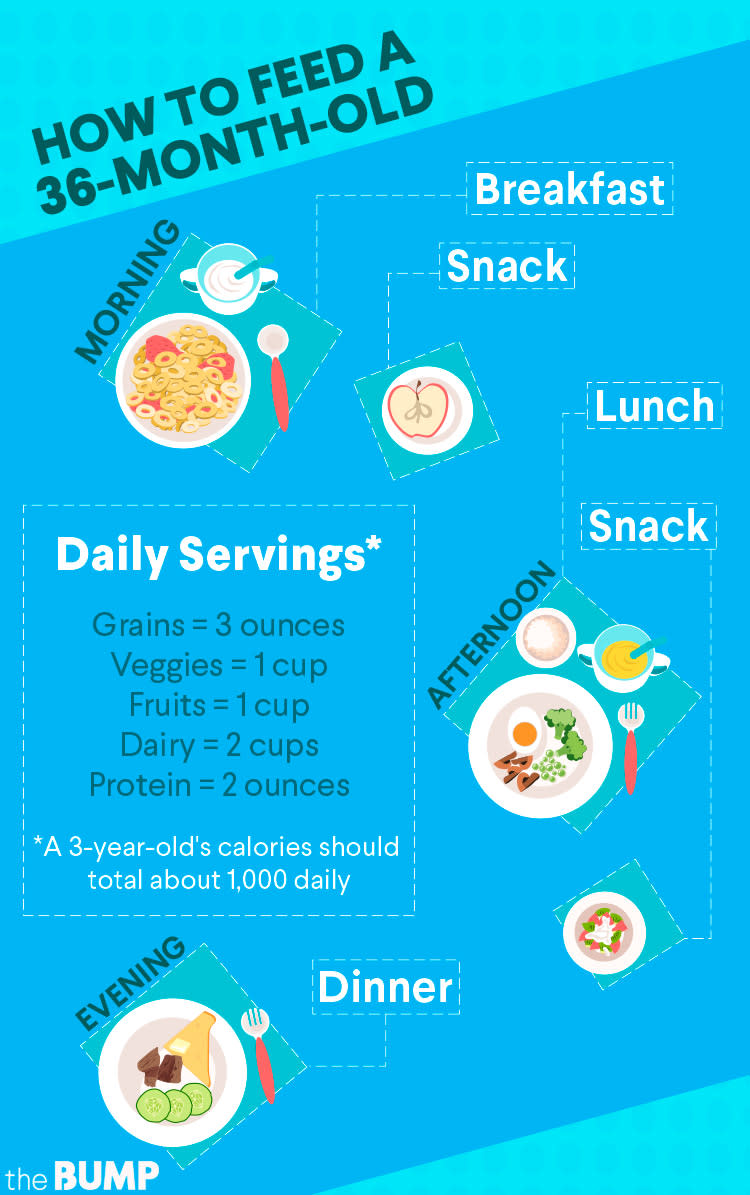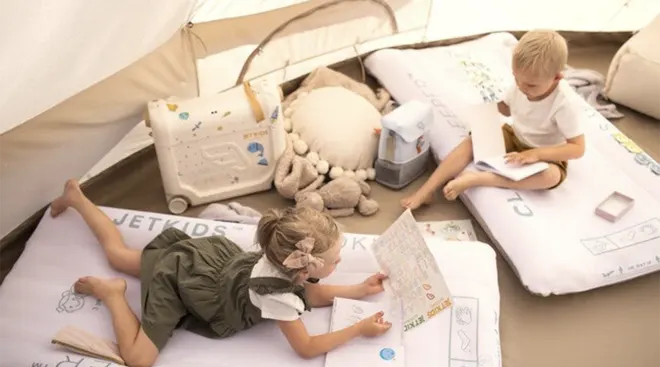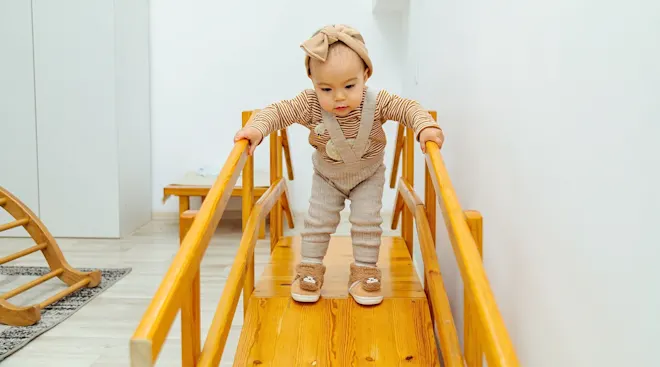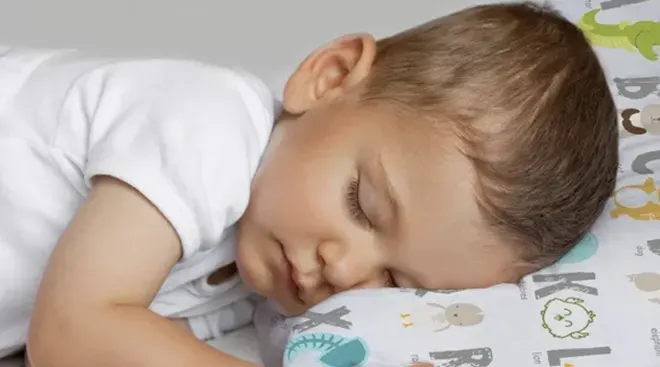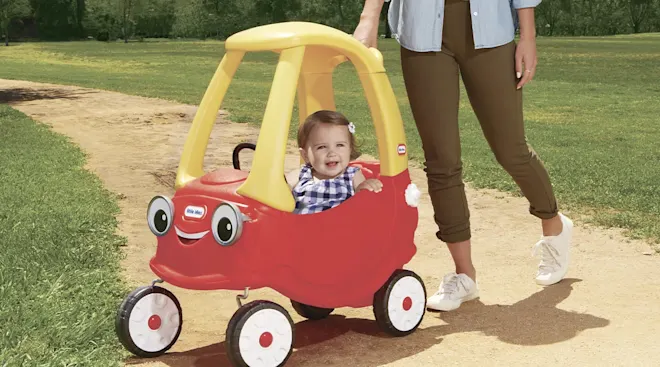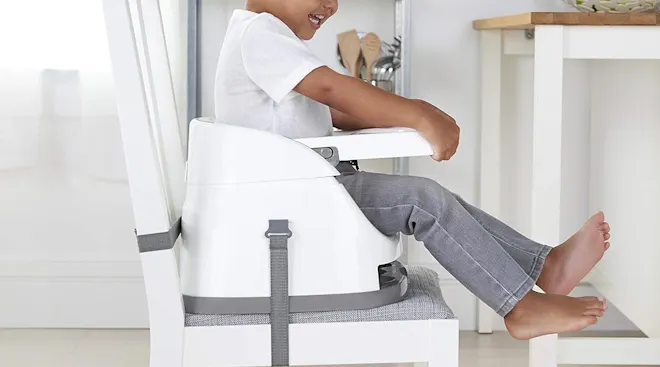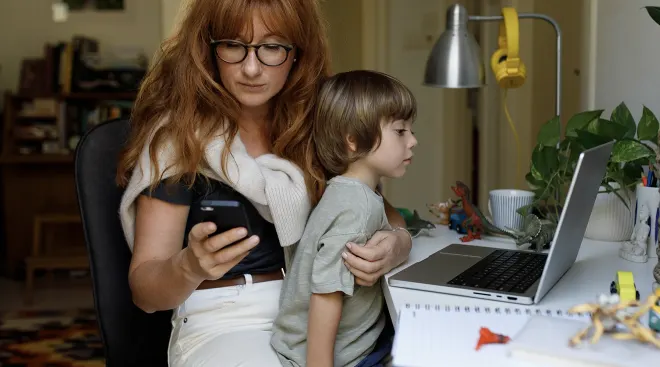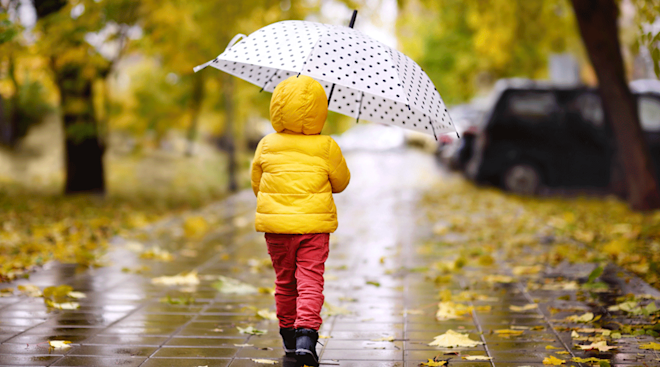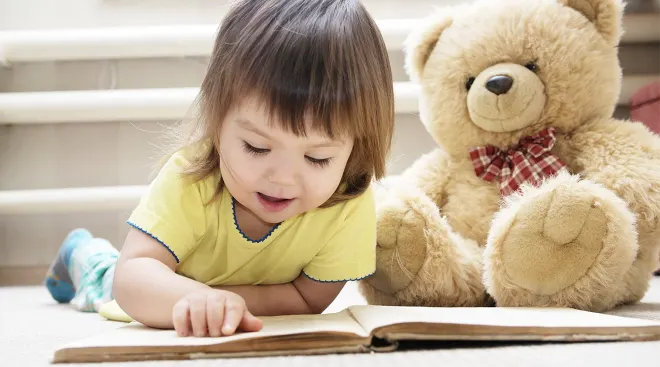Wow, your child is 3! Three-year-olds want to know how everything works and aren’t afraid to ask questions. That doesn't mean you need to have all the answers, though. You and your child can have a lot of fun simply pondering and exploring their curiosities together. So when your child asks something like, “Why is the sky blue?” try saying, “I don’t know. What do you think?” before launching into a scientific explanation. If they’re asking lots of questions about a specific topic and you don't know the answers, head to the library and find a children's book about it that you can read together.
You may experience a wide range of behaviors from your 36-month-old baby. You might notice they’re throwing daily tantrums or getting out of bed every night. These are common behaviors for a 36-month-old, as they’re still developing and learning how to interact with the world. To help guide you through this uncharted territory, we’ve listed some helpful tips and tricks for everything from suggested feeding schedules to which 36-month-old milestones to keep an eye on. Follow along for advice on what you might experience and what you can expect when your child turns 3 years old.
Age 3 is time for a thorough checkup with the pediatrician to make sure your child's growth and development are on track.
3-Year-Old Weight & Height
Average weight for a 36-month-old is around 30.7 pounds for girls and 31.8 pounds for boys. Average height is around 37.1 inches for girls and 37.5 inches for boys, according to the US Centers for Disease Control and Prevention (CDC).
At your child's checkup, the doctor will plot their weight and height on a 3-year-old growth chart. The chart shows a child's measurements at each visit, as well as a curve of average growth for each weight and height percentile. This will help the doctor confirm your child is growing at a healthy rate.
3-Year-Old Milestones
“What should my 36-month-old be doing?” you ask? Between stringing together multi-word phrases to mastering potty training, here are some 36-month-old milestones you can expect in the coming weeks (if your toddler hasn’t already hit them).
- Speech. Most likely, your 3-year-old is talking like crazy. They’re probably using three- or even four-word sentences (“Go outside now!”) and saying a variety of words. In fact, it's normal for a 3-year-old to at least recognize around 1,000 words. (And “why” might just be their favorite.) If your 3-year-old is stuttering, mispronounces words or is using improper grammar, it's probably not cause for concern. They’re still learning proper speech. Still, you should bring up any worries to the doctor, so they can keep tabs.
- Motor skills. Your 3-year-old should be climbing and running with ease. They can probably walk up and down stairs one foot per step without using a railing and balance on one foot for about three seconds Your toddler should also be able to pedal a tricycle.
- Potty training. Potty training a 3-year-old is quite an accomplishment. You might find that even if your kid stays dry during the day, nighttime is a different story. Bed-wetting is not a concern at this age. In fact, some kids continue to wet the bed up to age 7. (That's what they make nighttime training pants for.)
Worried your child's development isn't on track? The CDC publishes a 36-month-old developmental checklist you can go over to see if your child is on par with their peers. At the three-year checkup, the pediatrician should ask you a series of questions that will help determine whether your child might be delayed or need a little extra help developmentally. This is where you can bring up any concerns you may have, such as signs of autism in a 3-year-old.
3-Year-Old Behavior
- Meltdowns and tantrums. A 3-year-old may have a good idea of what they want to do—like build a giant block tower—but doesn’t always have the physical skills or ability to make it turn out as well as they’d hoped. That may mean frustration and tears. Sure, you're officially out of the terrible twos, but you're not quite out of tantrum territory yet.
- Separation anxiety. A 3-year-old with separation anxiety may turn drop-offs at Grandma's house or at school into a whole lot of drama. Sure, they may be making you feel guilty, but your child will never get over it if you keep them close at all times. Keep goodbyes short and sweet. Remind your child what time you'll be back and what you'll do together. And try not to linger before you go.
- Other 3-year-old behavioral issues. In an informal poll, most parents we talked to said age 3 was more terrible than 2. It's not surprising to hear of a 3-year-old biting, running away from their parents in public and otherwise breaking the rules we thought they'd get by now. How to get a 3-year-old to listen? Remember: It's all a process. Disciplining a 3-year-old doesn't mean getting angry; it means setting clear rules and age-appropriate consequences.
Health is always a top concern for parents, and this age is no different. Some common health questions parents of 36-month-olds have are:
- My 3-year-old has diarrhea. What should I do?
- My 3-year-old is constipated. What should I do?
- My 3-year-old is throwing up. What should I do?
- My 3-year-old has a cough. What should I do?
- My 3-year-old has a fever. What should I do?
Ideal nutrition for a 3-year-old is pretty similar to ideal nutrition for the rest of the family, just in smaller portions.
How Much Should My 3-Year-Old Be Eating?
Three-year-olds should continue to eat three meals per day, plus two snacks. Offer them a variety of foods in all food groups—vegetables, fruits, grains, protein and dairy—daily. Focus on foods with high nutritional value and try to avoid junk foods and sugary drinks as much as possible.
How Many Calories Does a 3-Year-Old Need?
Doctors recommend about 1,000 calories per day for 2- and 3-year-olds, but you shouldn't have to count. Your child is a good judge of their own appetite, and during times of extra exercise or a growth spurt, they may be hungrier and need more calories than at other times. Instead, consider that your child should be having approximately 1 cup of fruit, 1 cup of vegetables, 3 ounces of grains, 2 ounces of protein and about 2 cups of dairy each day.
How Much Milk Should a 3-Year-Old Drink?
If they’re not getting dairy elsewhere in their diet, make it two cups. But if your kiddo is eating lots of yogurt and cheese, for example, or if you're breastfeeding your 3-year-old, they may need to drink less milk. Talk to the pediatrician for a personalized recommendation.
What to Feed My 36-Month-Old
Looking for some tasty and nutritious meal inspiration? Check out these food ideas for a 3-year-old:
36-Month-Old Feeding Schedule
Bedtime for a 3-year-old might be a struggle. Stick to the routine—and stick to your guns. When you say “One more song,” really just sing one more song and say goodnight.
How Much Sleep Does a 3-Year-Old Need?
Most 3-year-olds need around 10 to 13 hours of sleep total, including both daytime and nighttime sleep. At this age, some kids are still napping for an hour or two in the afternoon and others are willfully ditching naps altogether. So adjust your child's schedule accordingly. For example, if your 36-month-old isn’t napping, move their bedtime a little earlier. And if they are napping, don't let them snooze so long or so late in the afternoon that it interferes with their ability to fall asleep at night.
36-Month-Old Sleep Schedule
Every kid is different, but your child's schedule may look something like this:
3-Year-Old Sleep Problems
Sleep regression is common at this age. For a 3-year-old who’s waking up at night, experts recommend short and businesslike visits. In other words, comfort them if they’ve had a bad dream or bring them water if they’re thirsty, but don't linger long. Kiss your toddler goodnight and exit the room. If your 3-year-old won't stay in bed, experts say you should always lead them back to their own bed if you want them to break the habit.
At 3 years old, night terrors can wreak havoc on families' nights. During a night terror, a child may begin crying, screaming, sitting up, walking or flailing. They may seem to talk, but they’re not awake. Thankfully, these episodes are more upsetting to you than they are to a child—they tend to not remember it happening the next day. This happens as kids transition from a deep sleep phase to a lighter one. If your child gets night terrors, don't try to wake them, just keep them safe, try to calm them and put them back to bed. Your child will eventually grow out of them.
As your 3-year-old gets more and more creative and expressive, they’re also learning some important facts that will help them get ready for school.
What to do with a 3-year-old? Fun activities, games and educational toys for 3-year-olds are:
- Colorful toys. Your child is learning their colors. Play together with colored blocks, balls or Play-Doh, and talk about the different colors. You can sort the blocks or balls by color too.
- Crayons and nontoxic paints. Your little Picasso is probably starting to take pride in creating some pretty artwork. Remember to hang a few faves on the fridge or corkboard.
- Songs. Keep singing simple songs with your kid. Three-year-olds love singing almost as much as they love to talk.
- Take your child to their 3-year checkup.
- For a 3-year-old, shots aren't typically necessary, but you may choose to have your child get the flu vaccine at this appointment.
- Plan to take your child for their next checkup around their fourth birthday. For the rest of their childhood, well visits should happen annually.
- If you'd like your child to start school this year, sign them up for 3-year-old preschool, if you haven't already.
- Take a trip to the library for some new books with a fresh perspective—and that answer some of your 3-year-old’s most probing questions.
- It's rare (but not totally impossible) to find a 3-year-old reading. Still, you may notice your child starting to recognize symbols and signs and know that they say "stop" or "open" when they see them. This means the ability to read is emerging. Get into the habit of reading together every day to encourage your child’s reading process.
- Toddlers at the 36-month-old mark tend to start showing interest in playing with other children. Enroll your toddler in playgroups or host playdates to encourage social interaction with children their age.
- While many 36-month-old babies are speaking full sentences at this stage, they’re bound to make mistakes here and there. Instead of pointing out these mistakes when they happen, simply repeat the corrected sentence or word back to your toddler. This helps them catch on without causing unnecessary frustration or embarrassment.
- A 36-month-old can seem like a big kid at times, but that doesn’t mean they should experience as much screen time as an older child. Experts recommend limiting screen time on tablets, smartphones and TVs to less than one hour a day.
- Is your toddler afraid of the dark? Don’t worry; this is totally normal for a 36-month-old. To help mitigate the problem, acknowledge your little one’s fears and provide comfort and reassurance. Create a relaxing bedtime routine, give them a security option like a stuffed bear and invest in a small night light. You can even play in the dark with glow-in-the-dark toys to help calm their fears.
- As tempting as it may be to instruct a wiggly 36-month-old baby to sit still, it’s best to let toddlers burn off that excess energy. Children develop coordination and balance by running around and climbing on everything. Schedule plenty of outside time to help your child explore their physical skills.
A 36-month-old baby is like a sponge, learning new things about life every day. During this next year, you’ll see your child’s imagination expand as they process new information and come up with questions every other minute. Be patient and encourage their sense of wonder. As you know, time flies, so be sure to embrace these exciting moments with your toddler.
Please note: The Bump and the materials and information it contains are not intended to, and do not constitute, medical or other health advice or diagnosis and should not be used as such. You should always consult with a qualified physician or health professional about your specific circumstances.
Navigate forward to interact with the calendar and select a date. Press the question mark key to get the keyboard shortcuts for changing dates.
































